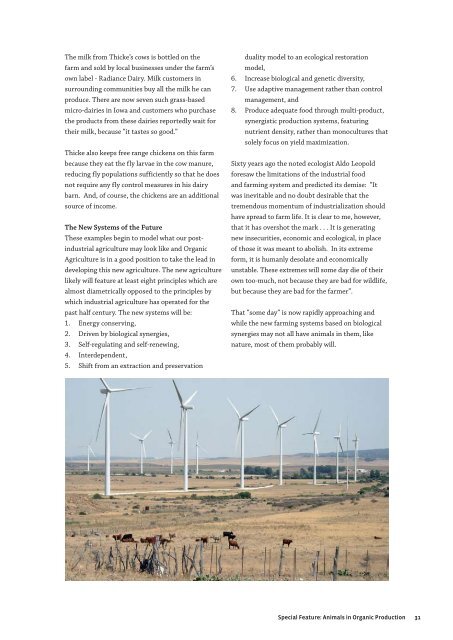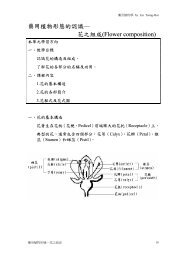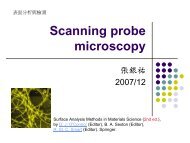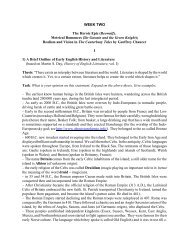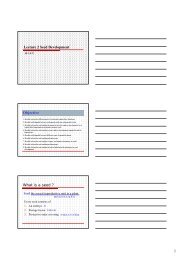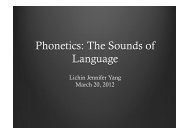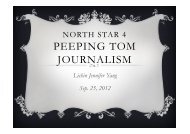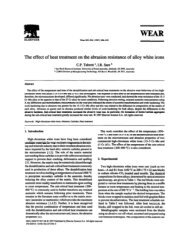Ecology and Farming
Ecology and Farming
Ecology and Farming
Create successful ePaper yourself
Turn your PDF publications into a flip-book with our unique Google optimized e-Paper software.
The milk from Thicke’s cows is bottled on the<br />
farm <strong>and</strong> sold by local businesses under the farm’s<br />
own label - Radiance Dairy. Milk customers in<br />
surrounding communities buy all the milk he can<br />
produce. There are now seven such grass-based<br />
micro-dairies in Iowa <strong>and</strong> customers who purchase<br />
the products from these dairies reportedly wait for<br />
their milk, because “it tastes so good.”<br />
Thicke also keeps free range chickens on this farm<br />
because they eat the fly larvae in the cow manure,<br />
reducing fly populations sufficiently so that he does<br />
not require any fly control measures in his dairy<br />
barn. And, of course, the chickens are an additional<br />
source of income.<br />
The New Systems of the Future<br />
These examples begin to model what our post-<br />
industrial agriculture may look like <strong>and</strong> Organic<br />
Agriculture is in a good position to take the lead in<br />
developing this new agriculture. The new agriculture<br />
likely will feature at least eight principles which are<br />
almost diametrically opposed to the principles by<br />
which industrial agriculture has operated for the<br />
past half century. The new systems will be:<br />
1.<br />
2.<br />
3.<br />
4.<br />
5.<br />
Energy conserving,<br />
Driven by biological synergies,<br />
Self-regulating <strong>and</strong> self-renewing,<br />
Interdependent,<br />
Shift from an extraction <strong>and</strong> preservation<br />
6.<br />
7.<br />
8.<br />
duality model to an ecological restoration<br />
model,<br />
Increase biological <strong>and</strong> genetic diversity,<br />
Use adaptive management rather than control<br />
management, <strong>and</strong><br />
Produce adequate food through multi-product,<br />
synergistic production systems, featuring<br />
nutrient density, rather than monocultures that<br />
solely focus on yield maximization.<br />
Sixty years ago the noted ecologist Aldo Leopold<br />
foresaw the limitations of the industrial food<br />
<strong>and</strong> farming system <strong>and</strong> predicted its demise: “It<br />
was inevitable <strong>and</strong> no doubt desirable that the<br />
tremendous momentum of industrialization should<br />
have spread to farm life. It is clear to me, however,<br />
that it has overshot the mark . . . It is generating<br />
new insecurities, economic <strong>and</strong> ecological, in place<br />
of those it was meant to abolish. In its extreme<br />
form, it is humanly desolate <strong>and</strong> economically<br />
unstable. These extremes will some day die of their<br />
own too-much, not because they are bad for wildlife,<br />
but because they are bad for the farmer”.<br />
That “some day” is now rapidly approaching <strong>and</strong><br />
while the new farming systems based on biological<br />
synergies may not all have animals in them, like<br />
nature, most of them probably will.<br />
Special Feature: Animals in Organic Production<br />
31


